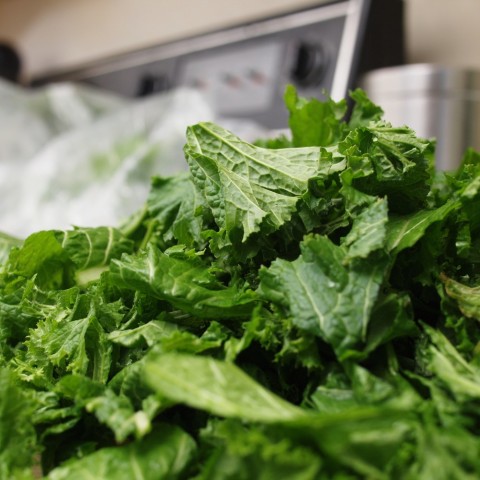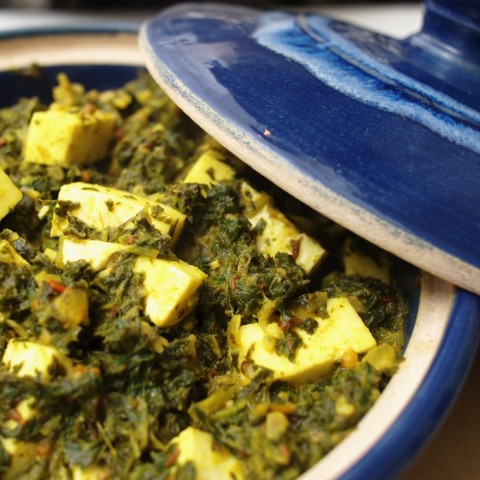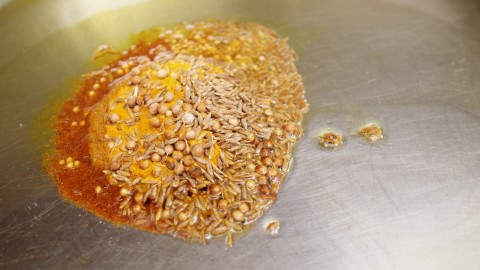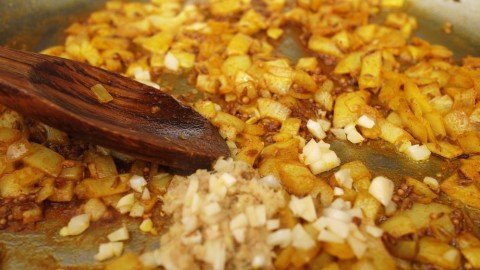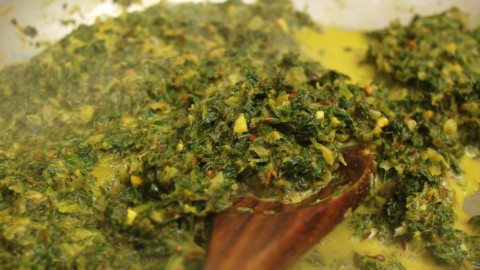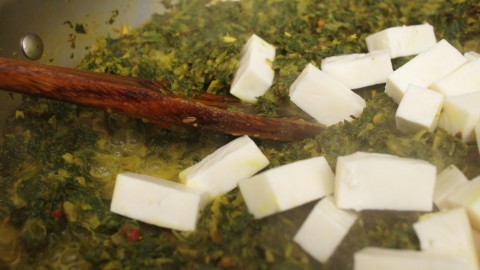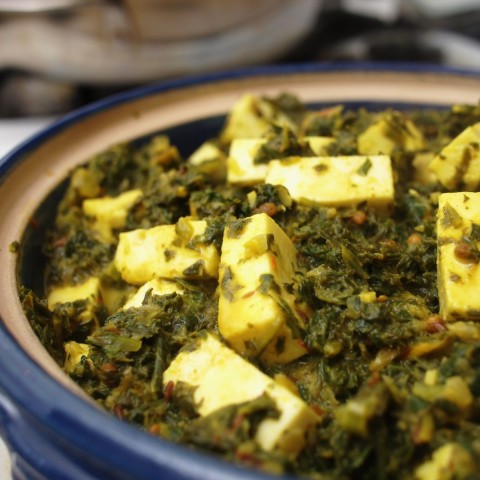Real saag! exclaimed my friend Allia, smiling as I put the dish on the table. Most restaurants say saag paneer, but what they mean is palak. Spinach. Saag is always mustard greens.
Allia would know. Not only is her family from India, but they are avid cooks. Her aunt alone, I am informed, is responsible for untold gustatory delights. She is the sort of person who converts food haters into food enthusiasts, the sort who teaches classes on the delicate art of Indian cuisine — and sets her own price for her time.
Such things run in families. So when I have an Indian cooking question, I can think of worse people to answer it for me.
Yet Allia’s mealtime proclamation left me a tiny bit bothered. Why is it, I thought to myself, that almost every Indian restaurant I’ve ever been to has claimed to be serving one thing, when in fact they are serving another? Does palak have a poor reputation? Is the word considered too difficult to pronounce?
The distinction between saag and palak — as mustard greens and spinach — is one I’ve encountered many times before. It had never occurred to me to pay it much mind. But once I began wondering, I had a hard time letting it go. And so I embarked upon some research.
After some initial floundering, I came across this excellent glossary of Indian culinary terms. It is attached to Mamta’s kitchen, which is a fair reputable source for Indian cooking information. It took some reading, and some cross-checking of facts, but best as I can make out, this is how it is:
Palak, in Hindi, means spinach. Specifically and only spinach. Saag, on the other hand, means greens. In the same way that I might refer to kale and collards and mustard all, interchangeably, as just ‘greens,’ I might refer to them all, equally, as saag. If I wanted to refer only to mustard greens, the proper term would be sarson. Similarly, if I wanted to refer only to sorrel, it would be khatta.
Though none of this, of course, takes idiom into account. It could be that, just as we don’t necessarily classify spinach and kale in the same leafy-green category — one being tough and the other delicate — the same might be true for palak and saag. It could be that mustard greens are India’s most common acerbic green, and are therefore virtually synonymous with saag. It could be, but I don’t know.
Hindi speakers out there — perhaps one of you could help me out?
At the very least, it seems that Allia is mostly right: not all saag is palak, but all palak is a sub-species of saag. And if Indian restaurants are not stretching the definition of the term, they are at least vaguing it up a bit.
That said, the saag that I am referring to here is, indeed, mustard greens. Mustard greens are underutilized in the U.S. — at least beyond the South. And that, in my opinion, is to our own discredit. They have a lovely, nutty, mildly bitter flavor. They have a texture that is somewhat more delicate than collards or kale — perhaps somewhere in between acerbic greens and spinach. But they are much more flavorful than spinach, and are much, much less likely to disintegrate into an unpleasant slime when cooked.
Up until this point, I have been right there with Allia, believing saag to be mustard greens, and believing it — rightly, I think — to be much superior to the gloppier palak. Now, I suppose, I might have to put it another way: of all the different versions of saag paneer out there, sarson is my favorite.*
And this is how you make it.
2 Large Bunches of Mustard Greens, stemmed and chopped
8 oz Paneer Cheese, cut into cubes**
3/4 cup Milk or Cream
1/2 Onion, finely chopped
3 Cloves of Garlic, minced
2 tsp Cumin Seed
1 tsp Ground Turmeric
1 tsp Coriander Seed
1 tsp Fresh Grated Ginger
1 tsp Red Pepper Flakes (I actually used lacto-fermented hot peppers)
1/2 tsp Mustard Seed
1/2 tsp Fenugreek Seed
Juice of 1 Lemon
Vegetable (or Olive) Oil
Salt
To a sauté pan over medium heat, add a generous measure of oil, along with the turmeric, cumin, coriander, mustard, and fenugreek seeds. Allow them to cook just until you smell toasting spices, then add the onion, mix well, and cook until it is translucent.
When the onion is ready, add the ginger, garlic, and pepper flakes. Cook for about a minute, then add the mustard greens (and a couple of tablespoons of water, if they look like they’re really dry). Cover the sauté pan, and allow the mustard greens to steam for five to ten minutes, until they have wilted. Then remove the cover, mix in the milk or cream, and cook for about five minutes more.
At the end of that time, remove the cooked greens to a blender or food processor, and pulse them on high until everything is mixed and finely chopped — but not puréed.
Return them to the sauté pan, mix in the lemon juice, carefully fold in the paneer cubes (you don’t want to break them), and cook the whole dish together for about ten minutes.
Saag paneer is best served over basmati rice. You can serve it right off the stove, or refrigerate and reheat it with no ill effects.
* I would like to make one added distinction, here. I’m definitely not talking about this sarson paneer, which is paneer cheese in a mustard sauce.
** Paneer can be had from any Indian market, and can sometimes be found at the Whole Foods. It is not interchangeable with most other cheeses. And — good lord! — you can’t just use tofu!
